Mobility Sensing & Prediction
For a century, transportation agencies have relied on costly and unreliable manual data collection systems. These approaches have hampered the effective planning, management, and evaluation of mobility services, ultimately reducing efficiency and threatening quality customer service.
The development of Information and Communication Technology (ICT), however, has transformed what was once a data-starved arena into a data-rich environment for planners and managers.
At JTL, we utilize automatic data sources, such as smart-card transactions, GPS-based vehicle locations, cell phone records, and mobility apps to estimate and predict travel demand, explore behavioral patterns, quantify service reliability and evaluate transportation system performance as a whole.
| Impacts of remote work on vehicle miles traveled and transit ridership in the USA, , Nature Cities, (2024) |
Remote work's potential as a sustainable mobility solution has garnered attention, particularly due to its widespread adoption during the COVID-19 pandemic. Our study systematically examines the impacts of remote work on vehicle-miles traveled (VMT) and transit ridership in the United States from April 2020 to October 2022. We find that using the pre-pandemic levels as the baselines, a mere 1% decrease in on-site workers corresponds to a 0.99% reduction in state-level VMT and a 2.26% drop in... |
|
| The Mobility Pattern of Dockless Bike Sharing: A Four-month Study in Singapore, , Transportation Research Part D, (2021) |
Many cities around the world have adopted dockless bike-sharing programs with the hope that this new ser- vice could enhance last-mile public transit connections. However, our understanding of the travel patterns using dockless bike sharing is still limited. To advance the knowledge on the new service, this study inves- tigates mobility patterns of dockless bike sharing in Singapore using a four-month dataset. An exploratory spatiotemporal analysis is conducted to show daily travel patterns... |
|
| Predictive decision support platform and its application in crowding prediction and passenger information generation, , Transportation Research Part C, (2021) |
Demand for public transport has witnessed a steady growth over the last decade in many densely populated cities around the world. However, capacity has not always matched this increased demand. As such, passengers experience long waiting times and are denied boarding during the peak hours. Crowded platforms and the subsequent customer dissatisfaction and safety issues have become a serious concern. The COVID-19 pandemic has dramatically reduced passengers’ willingness to board crowded trains... |
|
| Unexpected Bus Operator Absence and Extraboard Scheduling – MBTA Case Study, , Transportation Research Board 99th Annual Meeting, Washington, D.C., (2020) |
Improving service reliability and reducing cost have always been prioritized by transit agencies and workforce planning is related to both performance metrics. An important workforce planning function is the management of the extraboard operators who cover for absent drivers. Despite its importance, extraboard planning is an understudied area, in part due to the lack of detailed and reliable data. In this paper, using data from HASTUS Daily at the MBTA, we investigate open work caused by... |
|
| Automated Information Extraction From Textual Data: Application In Transit Disruption Management, , Transportation Research Board 99th Annual Meeting, Washington, D.C., (2020) |
Despite rapid advances in automated text processing, many related tasks in transit and other transportation agencies are still performed manually. For example, incident management reports are often manually processed and subsequently stored in a standardized format for later use. The information contained in such reports can be valuable for many reasons: identification of issues with response actions, underlying causes of each incident, impacts on the system, etc. In this paper, we develop a... |
|
| Bundled Mobility Passes in Chicago: Consumer Preference and Revenue Implications, , Transportation Research Board 99th Annual Meeting, Washington, D.C., (2020) |
Competition provided by “new” mobility services to public transit has often soured the relationship between the two transportation players. This paper proposes bundled mobility passes between public transit, bikesharing, and Transportation Network Companies (TNCs), as a potential framework in which the popularity of new mobility can be tapped to increase public transit revenue and pass sales while at the same time enabling public institutions to regulate these services more effectively. 1467... |
|
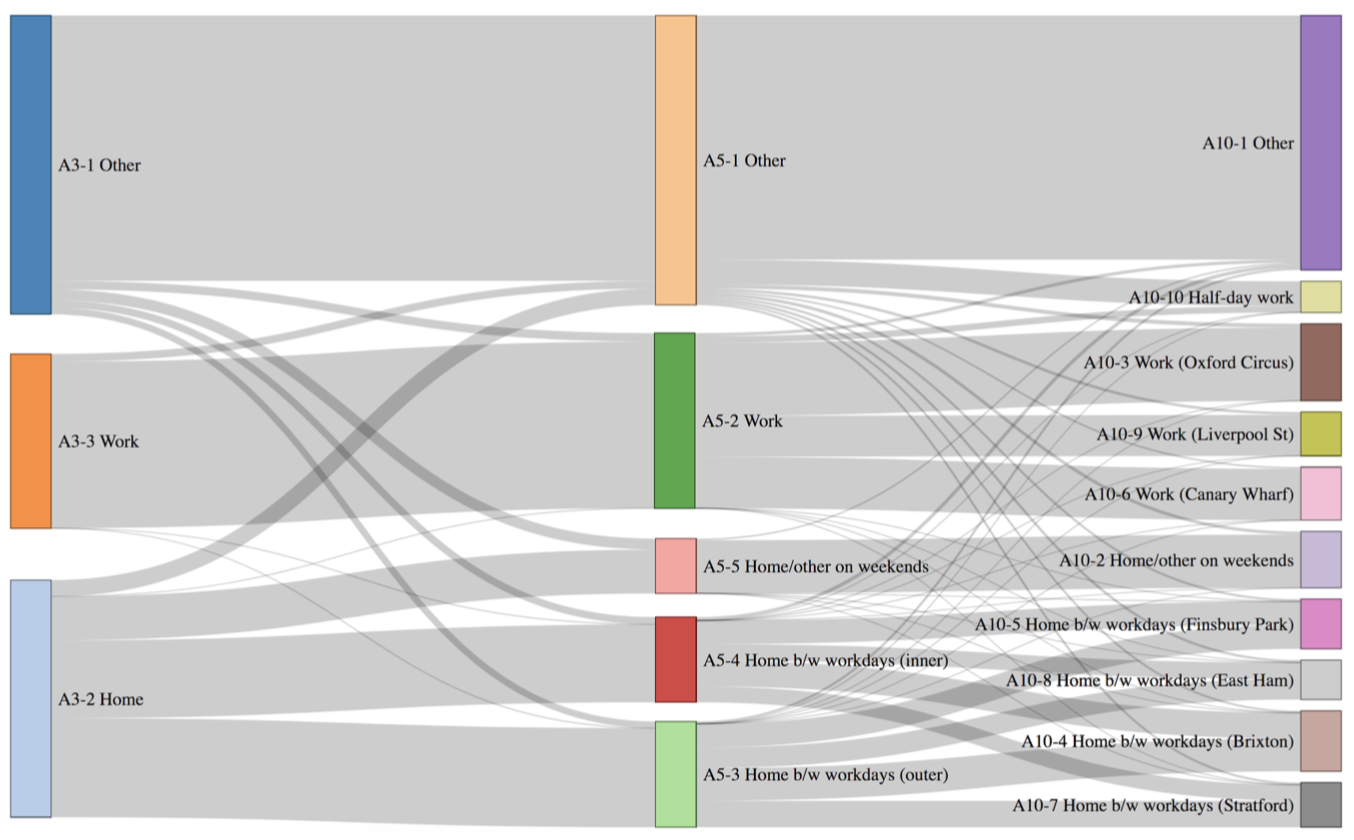 |
Discovering Latent Activity Patterns from Transit Smart Card Data: A Spatiotemporal Topic Model, , Transportation Research Part C, (2020) |
Although automatically collected human travel records can accurately capture the time and location of human |
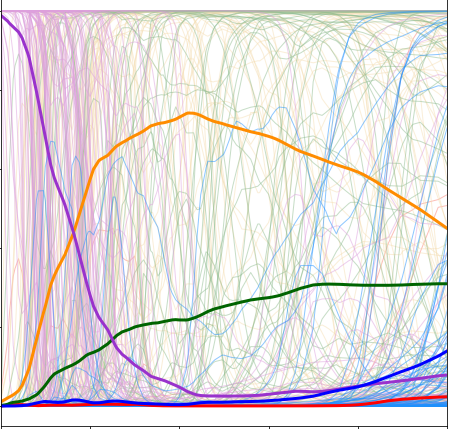 |
Deep Neural Networks for Choice Analysis: Extracting Complete Economic Information for Interpretation, , Transportation Research Part C: Emerging Technologies, (2020) |
While deep neural networks (DNNs) have been increasingly applied to choice analysis showing high predictive power, it is unclear to what extent researchers can interpret economic information from DNNs. This paper demonstrates that DNNs can provide economic information as complete as classical discrete choice models (DCMs). The economic information includes choice predictions, choice probabilities, market shares, substitution patterns of alternatives, social welfare, probability derivatives,... |
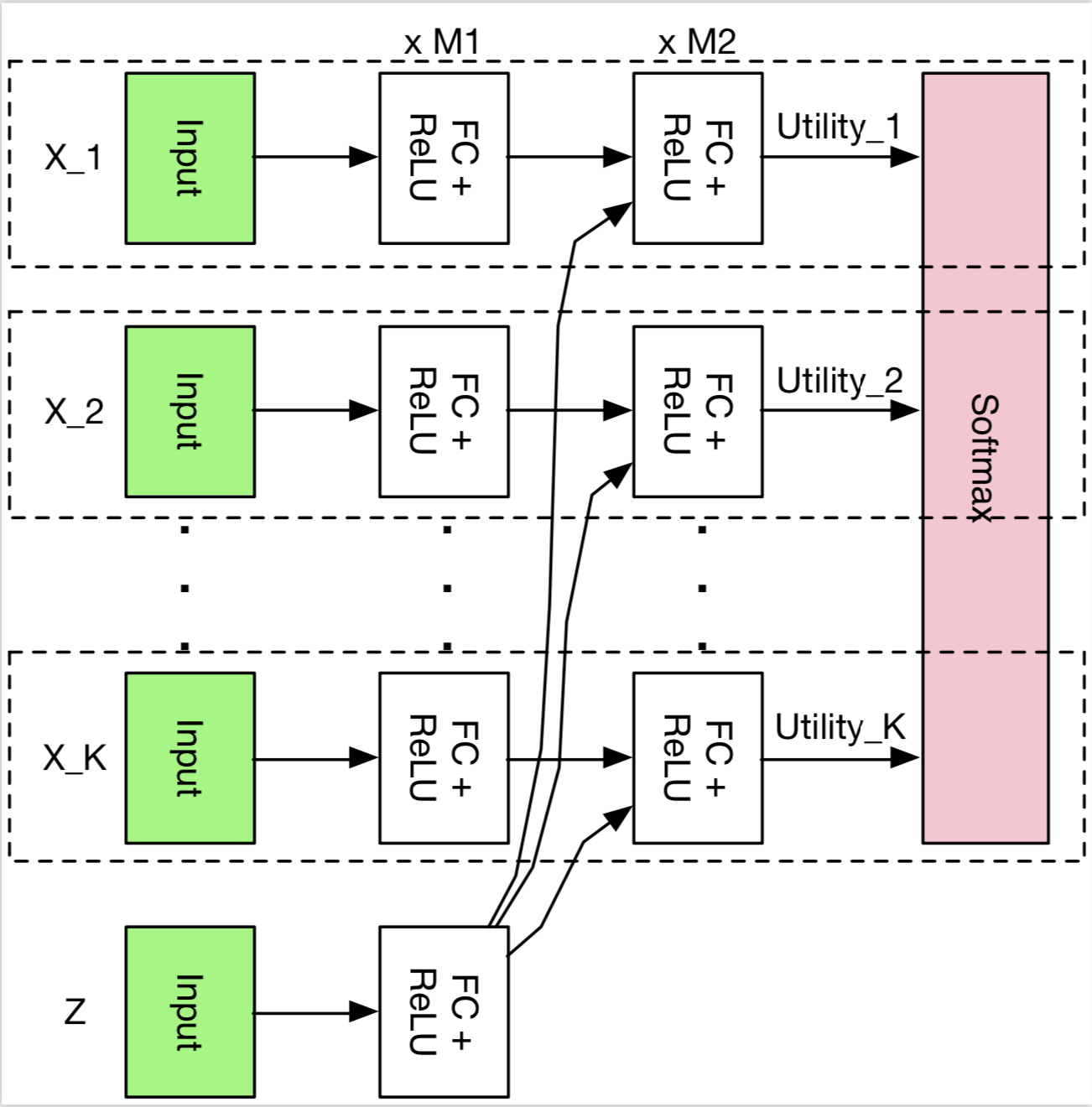 |
Deep Neural Networks for Choice Analysis: Architecture Design with Alternative-Specific Utility Functions, , Transportation Research Part C, (2020) |
Whereas deep neural network (DNN) is increasingly applied to choice analysis, it is challenging to reconcile domain-specific behavioral knowledge with generic-purpose DNN, to improve DNN’s interpretability and predictive power, and to identify effective regularization methods for specific tasks. To address these challenges, this study demonstrates the use of behavioral knowledge for designing a particular DNN architecture with alternative-specific utility functions (ASU-DNN) and thereby... |
| Machine-learning-augmented analysis of textual data: application in transit disruption management, , IEEE Open Journal of Intelligent Transportation Systems, (2020) |
Despite rapid advances in automated text processing, many related tasks in transit and other transportation agencies are still performed manually. For example, incident management reports are often manually processed and subsequently stored in a standardized format for later use. The information contained in such reports can be valuable for many reasons: identification of issues with response actions, underlying causes of each incident, impacts on the system, etc. In this paper, we develop a... |
|
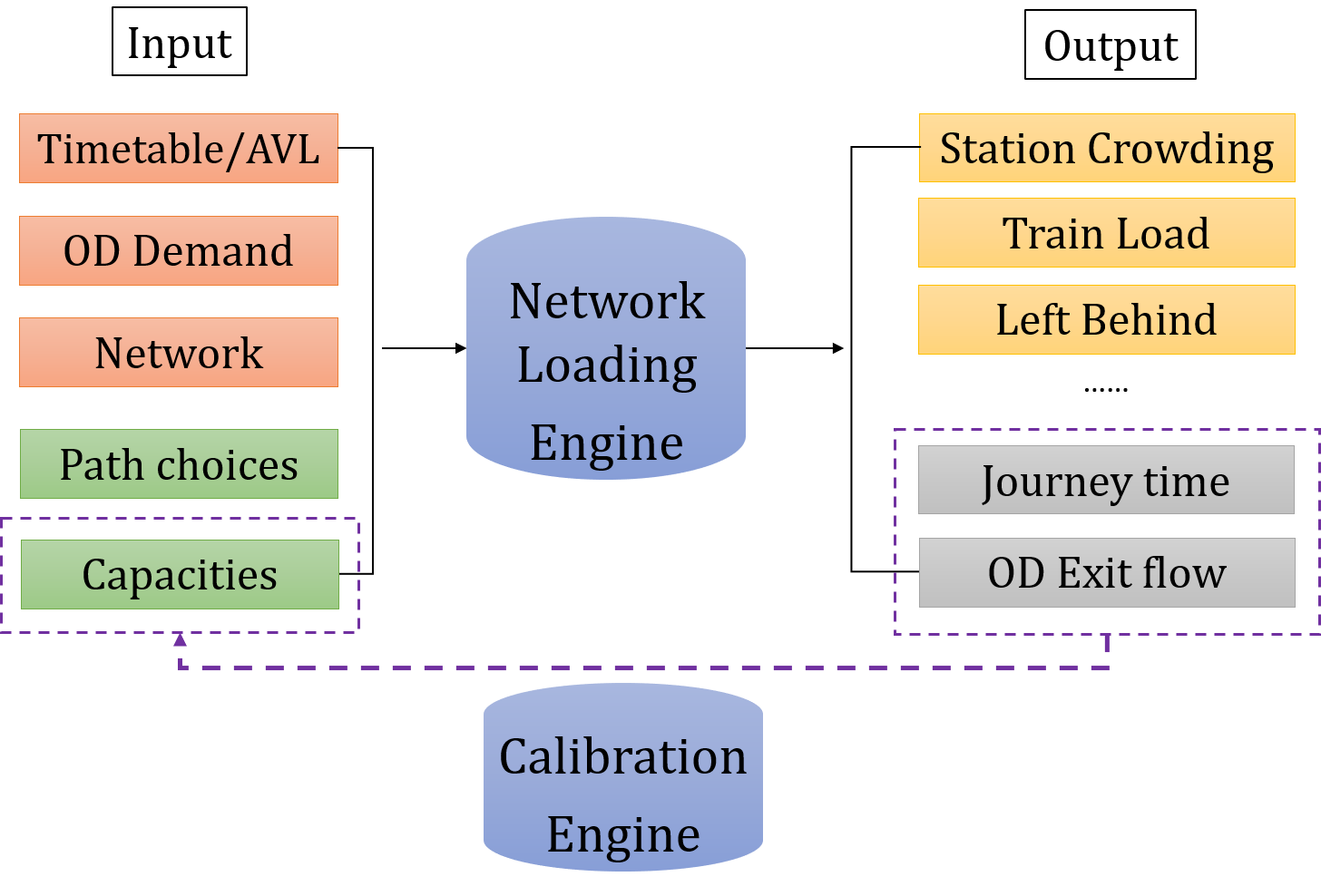 |
Capacity-Constrained Network Performance Model for Urban Rail Systems, , Transportation Research Record, (2020) |
This paper proposes a general Network Performance Model (NPM) for urban rail systems performance monitoring using smart card data. NPM is a schedule-based network loading model with strict capacity constraints and boarding priorities. It distributes passengers over the network given origin-destination (OD) demand, operations, route choice, and effective train capacity. A Bayesian simulation-based optimization method for calibrating the effective train capacity is introduced, which explicitly... |
| Modeling Epidemic Spreading through Public Transit using Time-Varying Encounter Network, , Transportation Research Part C, (2020) |
Passenger contact in public transit (PT) networks can be a key mediate in the spreading of infectious diseases. This paper proposes a time-varying weighted PT encounter network to model the spreading of infectious diseases through the PT systems. Social activity contacts at both local and global levels are also considered. We select the epidemiological characteristics of coronavirus disease 2019 (COVID-19) as a case study along with smart card data from Singapore to illustrate the model at... |
|
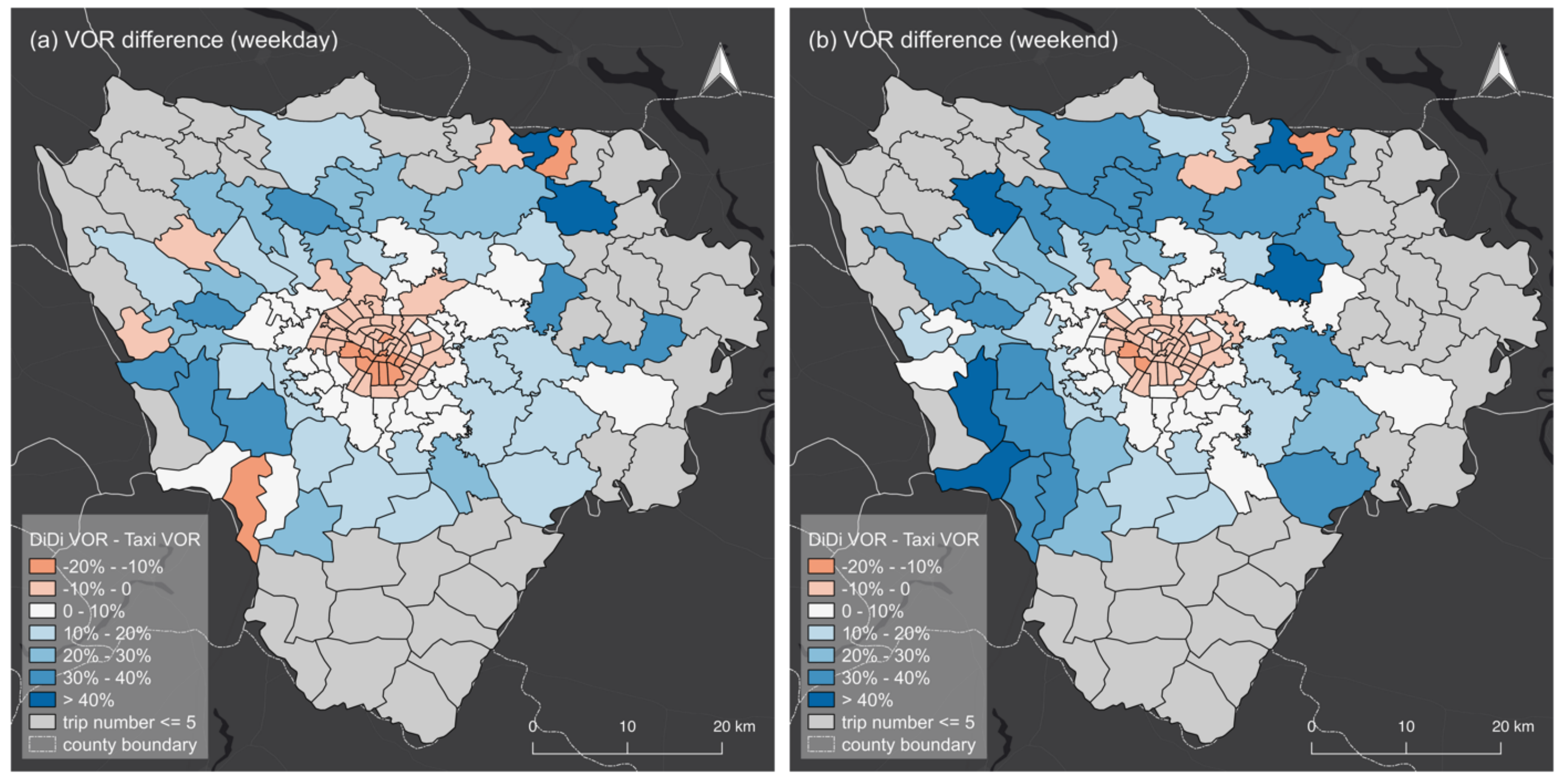 |
Is Ridesourcing More Efficient than Taxis?, , Applied Geography, (2020) |
Ridesourcing services such as Uber, Lyft, and DiDi are purported to be more efficient than traditional taxis because they can match passengers with drivers more effectively. Previous studies have compared the efficiency of ridesourcing and taxis in several cities. However, gaps still exist regarding the measurement and comparison between the two modes, and the reasons for the higher efficiency of ridesourcing have not been empirically examined. This paper aims to measure, compare, and... |
| Predictive decision support for real-time crowding prediction and information generation, , Transportation Research Board 98th Annual Meeting, Washington, D.C., (2019) |
This paper proposes a predictive decision support platform for urban rail systems. It provides predictive information of crowding on trains and at stations. Additionally, it generates information on the expected likelihood of being able to board upcoming trains, which can be communicated to passengers. Using this information, passengers can make better-informed decisions as to which train to board. The proposed decision support platform comprises two components: demand prediction, and... |
|
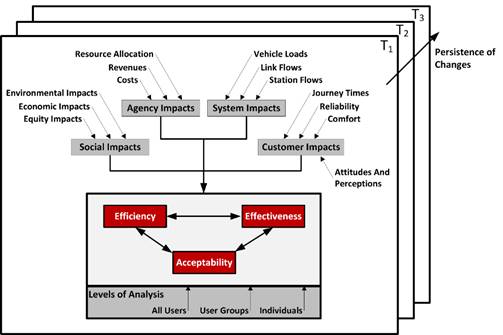 |
Demand Management of Congested Public Transport Systems: A Conceptual Framework and Application Using Smart Card Data, , Transportation, (2019) |
Transportation Demand Management (TDM), long used to reduce car traffic, is receiving attention among public transport operators as a means to reduce congestion in crowded public transportation systems. Though far less studied, a more structured approach to Public Transport Demand Management (PTDM) can help agencies make informed decisions on the combination of PTDM and infrastructure investments that best manage crowding. Automated fare collection (AFC) data, readily available in many... |
|
|
Value of Demand Information in Autonomous Mobility-on-Demand Systems, , Transportation Research Part A, (2019) |
Effective management of demand information is a critical factor in the successful operation of autonomous mobility-on-demand (AMoD) systems. This paper classifies, measures and evaluates the demand information for an AMoD system. First, the paper studies demand information at both individual and aggregate levels and measures two critical attributes: dynamism and granularity. We identify the trade-offs between both attributes during the data collection and information inference processes and... |
 |
Home-work Carpooling for Social Mixing, , Transportation, Washington, D.C., (2019) |
Shared mobility is widely recognized for its contribution in reducing carbon footprint, traffic congestion, parking needs and transportation-related costs in urban and suburban areas. In this context, the use of carpooling in home-work commute is particularly appealing for its potential of lessening the number of cars and kilometers traveled, consequently reducing major causes of traffic in cities. Accordingly, most of the carpooling algorithms are optimized for reducing total travel time,... |
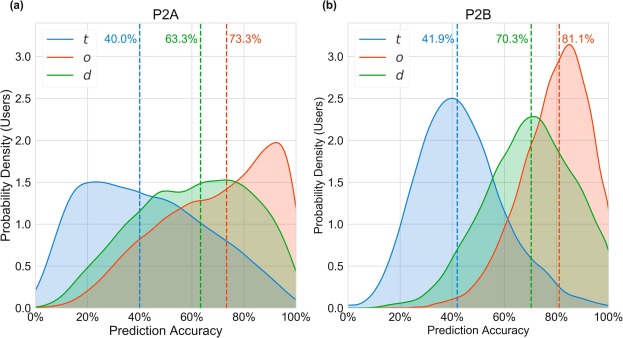 |
Individual mobility prediction using transit smart card data, , Transportation Research Part C, Volume 89, p.19-34, (2018) |
For intelligent urban transportation systems, the ability to predict individual mobility is crucial for personalized traveler information, targeted demand management, and dynamic system operations. Whereas existing methods focus on predicting the next location of users, little is known regarding the prediction of the next trip. The paper develops a methodology for predicting daily individual mobility represented as a chain of trips (including the null set, no travel), each defined as a... |
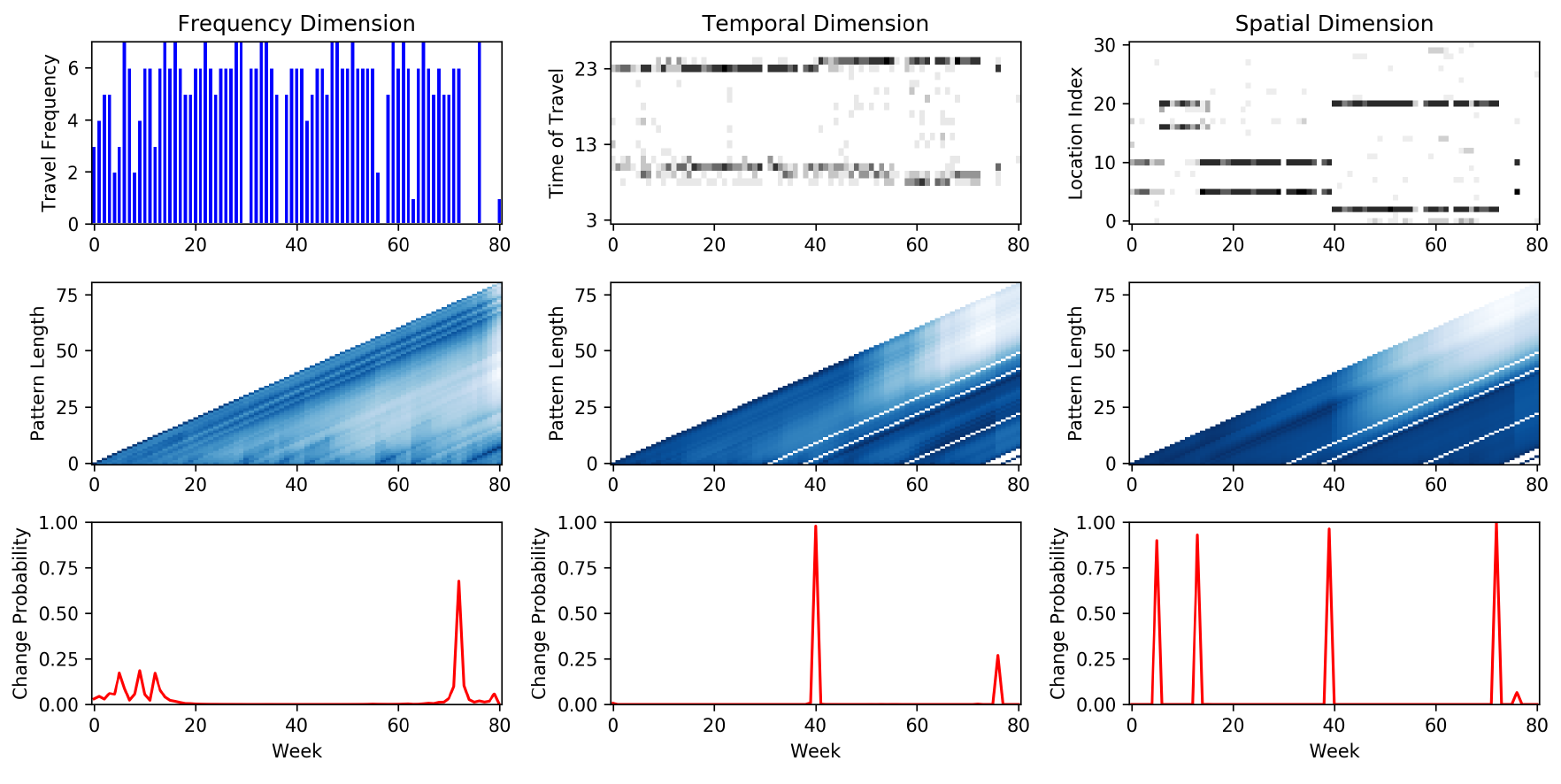 |
Detecting Pattern Changes in Individual Travel Behavior: A Bayesian Approach, , Transportation Research Part B, (2018) |
Although stable in the short term, individual travel patterns are subject to changes in the long term. The ability to detect such changes is critical for developing behavior models that are adaptive over time. We define travel pattern change as "abrupt, substantial, and persistent changes in the underlying pattern of travel behavior" and develop a methodology to detect such changes in individual travel patterns. We specify one distribution for each of the three dimensions of travel behavior... |
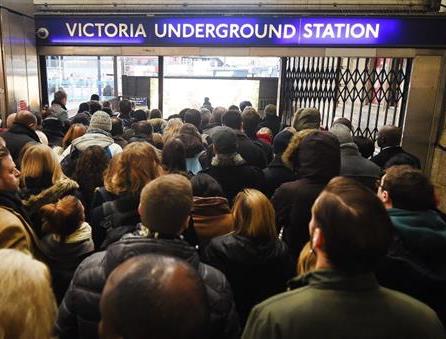 |
Real time transit demand prediction capturing station interactions and impact of special events, , Transportation Research Part C, (2018) |
Demand for public transportation is highly affected by passengers’ experience and the level of service provided. Thus, it is vital for transit agencies to deploy adaptive strategies to respond to changes in demand or supply in a timely manner, and prevent unwanted deterioration in service quality. In this paper, a real time prediction methodology, based on univariate and multivariate state-space models, is developed to predict the short-term passenger arrivals at transit stations. A... |
|
|
Identifying Hidden Visits from Sparse Call Detail Record Data, , Working paper, (2018) |
Despite a large body of literature on trip inference using call detail record (CDR) data, a fundamental understanding of their limitations is lacking. In particular, because of the sparse nature of CDR data, users may travel to a location without being revealed in the data, which we refer to as hidden visits. The existence of hidden visits hinders our ability to extract reliable information about human mobility and travel behavior from CDR data. In this study, we propose a data fusion... |
 |
Mobility as A Language: Predicting Individual Mobility In Public Transportation Using N-Gram Models, , Transportation Research Board 96th Annual Meeting, (2017) |
For public transportation agencies, the ability to provide personalized and dynamic passenger information is crucial for improving the efficiency of demand management and enhancing customer experience. This requires understanding and especially predicting individual travel behavior in the public transportation system, which is challenging because of the heterogeneity among passengers and the variability of their behaviors. This paper presents, to the best of our knowledge, the first attempt... |
 |
Incorporating Mobile Activity Tracking Data In A Transit Agency: Collecting, Comparing, And Trip Mode Inference, , Transportation Research Board 96th Annual Meeting, (2017) |
The near ubiquity of smartphones has the potential to transform how researchers, companies, and public transit agencies understand travel behavior. This research analyzes how an emerging class of automatically-collected data based on smartphone GPS and sensor information – referred to here as mobile activity-tracking data – can be used in a transit agency to better understand travel behavior. Through a collaboration with Transport for London, multiple weeks of mobile activity-tracking data... |
 |
Enabling Transit Service Quality Co-monitoring Through a Smartphone-Based Platform, , Transportation Research Record: Journal of the Transportation Research Board, (2017) |
The growing ubiquity of smartphones offers public transit agencies an opportunity to transform ways to measure, monitor, and manage service performance. We demonstrate the potential in a new tool for actively engaging customers in measuring satisfaction and co-monitoring bus service quality. The pilot initiative adapted a smartphone-based travel survey system, Future Mobility Sensing (FMS), to collect real-time customer feedback and objective operational measurements on specific bus trips.... |
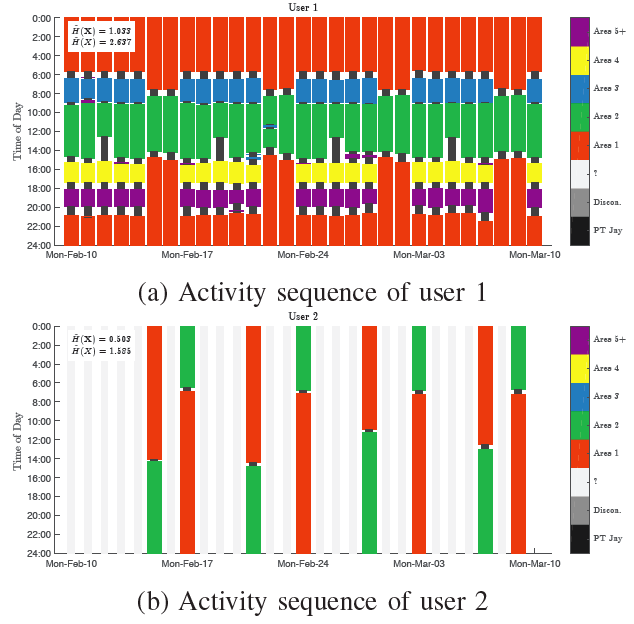 |
Measuring Regularity of Individual Travel Patterns, , IEEE Transactions on Intelligent Transportation Systems, (2017) |
Regularity is an important property of individual travel behavior, and the ability to measure it enables advances in behavior modeling, mobility prediction, and customer analytics. In this paper, we propose a methodology to measure travel behavior regularity based on the order in which trips or activities are organized. We represent individuals’ travel over multiple days as sequences of “travel events”—discrete and repeatable behavior units explicitly defined based on the research question... |
 |
Supervised Statistical Learning for Individual Level Trip Detection using Sparse Call Detail Record Data, , 95th Transportation Research Board Annual Meeting, 08/2015, Washington, D.C., (2016) |
Despite a large body of literature related to trip detection using Call Detail Record (CDR) data, the fundamental understanding of the limitations of the data is lacking and, particularly, its sparse nature is not well addressed in existing work. This paper proposes a conceptual framework to make explicit distinction between telecommunication patterns captured by CDRs and travel patterns that are of interest to the transportation community. A process is proposed to extract trips from CDRs at... |
 |
Individual-Level Trip Detection using Sparse Call Detail Record Data based on Supervised Statistical Learning, , Transportation Research Board 95th Annual Meeting, (2016) |
Despite a large body of literature related to trip detection using Call Detail Record (CDR) data, the fundamental understanding of the limitations of the data is lacking and, particularly, its sparse nature is not well addressed in existing work. This paper develops a conceptual framework to make explicit distinction between telecommunication patterns captured by CDRs and travel patterns that are of interest to the transportation community. Motivated by the over-reliance of existing... |
 |
FMS-TQ: Combining Smartphone and iBeacon 4 Technologies in A Transit Quality Survey, , 95th Transportation Research Board Annual Meeting, Washington, D.C., (2016) |
The Internet of Things (IoT) will offer transit agencies an opportunity to transform ways to measure, monitor, and manage performance. We demonstrate the potential value of two combined technologies, smartphones and iBeacons, for actively engaging customers in measuring satisfaction and co-monitoring bus service quality. Specifically, we adapt our smartphone-based survey system, Future Mobility Sensing (FMS), to connect with iBeacons for an event-driven approach to measure user-reported... |
 |
Clustering the Multi-week Activity Sequences of Public Transport Users, , 95th Transportation Research Board Annual Meeting, 08/2015, Washington, D.C., (2016) |
The public transport networks of dense cities such as London serve passengers with widely dierent travel patterns. In line with the diverse lives of urban dwellers, activities and journeys are combined within days and across days in diverse sequences. From personalized customer information, to improved travel demand models, understanding this type of heterogeneity among transit users is relevant to an number of applications core to public transport agencies' function. In this study,... |
 |
Uncertainty in Bus Arrival Time Predictions: Treating Heteroscedasticity With a Metamodel Approach, , IEEE Transactions on Intelligent Transportation Systems, Issue 99, p.1–11, (2016) |
Arrival time predictions for the next available bus or train are a key component of modern Traveller Information Systems (TIS). A great deal of research has been conducted within the ITS community developing an assortment of different algorithms that seek to increase the accuracy of these predictions. However, the inherent stochastic and non-linear nature of these systems, particularly in the case of bus transport, means that these predictions suffer from variable sources of error, stemming... |
Pages
TEAM MEMBERS
|
MST 2018 |
Postdoctoral Associate |
MST/MCP 2016 |
MCP/MST 2016 |
|
Postdoctoral Associate |
MST-ORC Student |
PhD 2018 |
Postdoctoral Associate |
|
Postdoctoral Associate |
Postdoctoral Fellow |
MST 2019 |
Professor of Cities and Transportation |











